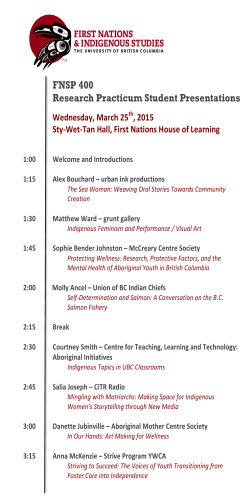
treaties
Treaties The decline of the fur trade in the 19th century, along with increasing European settlement, fundamentally changed the relationship between First Nations, Métis, and Inuit peoples and Europeans. As a result of new settlement and colonial policies, First Nations in postConfederation Canada became increasingly marginalized and were no longer treated as equals and allies, but as inferiors, dependents, and impediments to civilization. Most of the settled lands of Canada, in Ontario, Manitoba, Saskatchewan, and Alberta, were transferred from First Nations to the Crown (the Government) through treaties. Signing treaties was Canada's way to gain sovereignty over the West without the expense of military intervention. At treaty signing, the chiefs and headmen pledged allegiance to the Crown and agreed to follow the laws of the land. In return, they received a number of promises such as education, assistance in times of famine, a medicine chest, economic assistance and other social programs. The Crown received the land base to build Western Canada. Today both sides agree that the Treaties are agreements between the Crown (the Government) and First Nations, in which the First Nations exchanged some of their interests in specific areas of their ancestral lands in return for various kinds of payments and promises from Crown officials. However, each side has a different interpretation of what was intended by the agreements. The Canadians (British) and the First Nations were at the same meetings, listened to the same speeches (translated) and signed the same pieces of paper. Yet they had (and still have) two totally different concepts of what the treaties were about, and what each side was promising. The differences in understanding are rooted in two totally different world views, and two totally different concepts of land ownership, and two colliding purposes. The concept of private ownership of land by an individual, who could build a fence and keep others out forever, was totally foreign to First Nations people. “The earth does not belong to man; man belongs to the earth. This we know. All things are connected like the blood which unites one family. All things are connected. Whatever befalls the earth befalls the sons of the earth. Man did not weave the web of life; he is merely a strand in it. Whatever he does to the web, he does to himself.” -Chief Seattle, 1854 Aboriginal Worldview Making Treaties First Nations had an oral tradition. They passed down important information by the spoken word during important ceremonies and at celebrations. What was said was what was important to them, not what was written on paper. Though they did not have a written tradition, in the European sense, they recorded important events by sewing beaded wampum belts. Wampum belts signifying treaties became sacred objects that were brought out at certain times, Then elders recited the terms and understandings of the agreement commemorated by that ceremonial wampum belt. Aboriginals had treaties with each other long before European fur traders or settlers arrived in what is now called Canada. Aboriginal nations would use oral treaties to settle land disputes and end other conflicts, including war. Trade and marriage arrangements were commonly made between tribes as well. When the Europeans arrived, they brought with them their own methods, especially the written treaty. Particularly after the conquest, when the British gradually began to establish a strong hold on the continent, Aboriginals were not always happy with the outcomes of these written treaties - for governments of the time sometimes did not include oral promises made to the Aboriginals in the written treaty. This forms the basis of many land claims today, as Aboriginal leaders demand to be given what they were promised. Land Claims In general, there are two types of Aboriginal claims in Canada that are commonly referred to as “land claims” - comprehensive claims and specific claims. Comprehensive claims always involve land, but specific claims are not necessarily land-related. Comprehensive claims deal with Aboriginal rights. These claims are based on the traditional use and occupancy of land by First Nations, Métis and Inuit who did not sign treaties. Specific claims originate in First Nations’ claims that the Government of Canada did not fulfill its obligations either under historic treaties or the Indian Act. Types of claims include the inadequate allocation of reserve land, the failure to protect reserve land from unlawful disposition or lease, fraud on the part of government employees, and the misadministration of First Nations’ funds and other assets. Treaty Distribution Days A First Nation member's right to treaty payments depends on the precise terms and conditions of their specific First Nation's treaty. They are entitled to annual treaty payments if they are registered as an Indian and a member of a First Nation that signed a treaty providing for annual treaty payments. Treaty annuities are normally paid in cash at Treaty Day events held annually on or off reserve. The scene at each stop is similar. People gather at the band hall or some other appropriate place and receive their annual treaty pay -- a princely sum of $5.
© Copyright 2026













